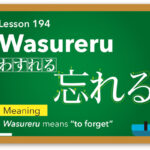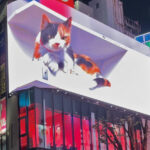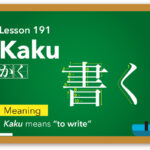
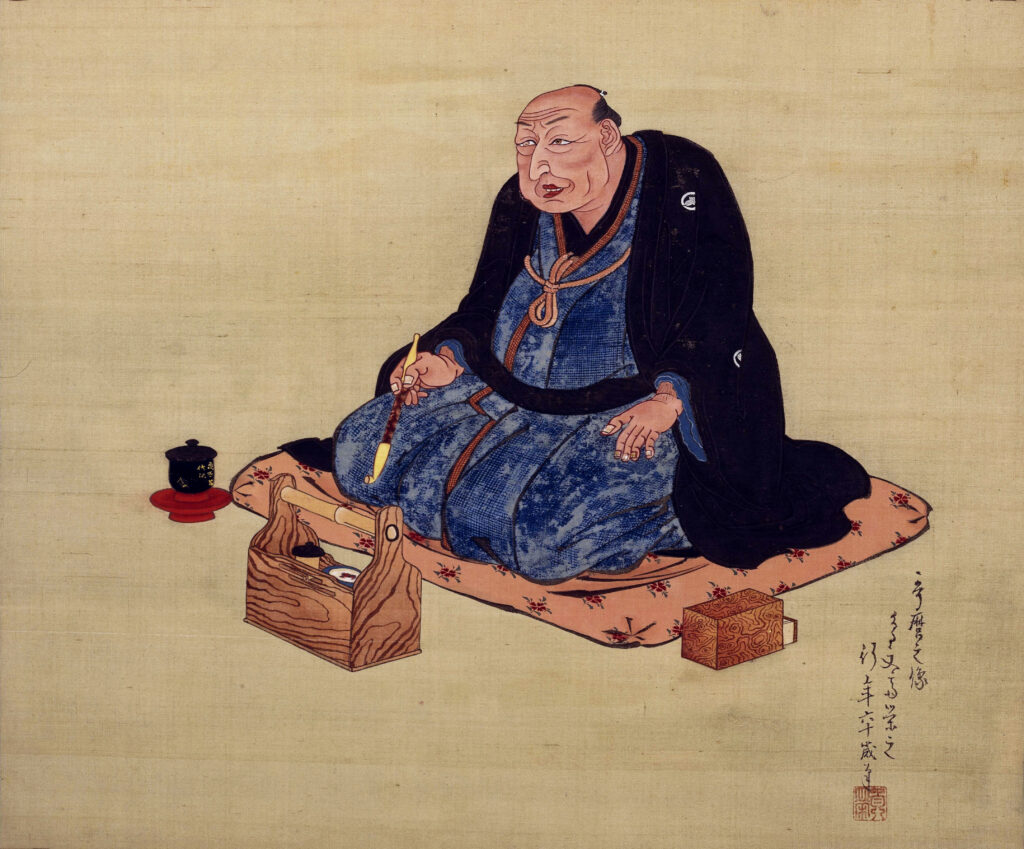
1753? – October 31, 1806
喜多川歌麿 Kitagawa Utamaro
Childhood name: Ichitaro → Yusuke
Defying the Shogunate to Capture Sensual Beauty
There are four major Ukiyo-e artists: Sharaku for kabuki actor portraits, Hiroshige for landscapes, Hokusai for the world, and Utamaro for paintings of beautiful women.
Kitagawa Utamaro is considered to be the most famous Ukiyo-e artist, known for his paintings of beautiful women. However, his artistic activities were also a struggle against the prohibitions of the shogunate. The following is an introduction to his tumultuous life.
Kitagawa Utamaro’s Unclear Life
As is generally the case with ukiyo-e artists, few documents and historical records shed light on the life of this famous painter, and details about his birth and family lineage remain unclear.
The year of his birth is commonly believed to be 1753, and while the prevailing theory places his birth in Edo (Tokyo), various other theories suggest locations such as Kyoto, Tochigi, and Kawagoe, none of which have been conclusively proven.
Information about his family is also ambiguous. While some documents indicate that he was married, there are conflicting records that suggest otherwise.
Early Life as a Painter
Kitagawa Utamaro began his training as a young boy under the painter Toriyama Sekien, who was known for his numerous paintings of yokai (monsters) and had many students. Some researchers have suggested that Utamaro was merely one of Sekien’s students while others suggest that the two possibly may have been father and son.
The earliest known work by Kitagawa Utamaro is an illustration published in 1770 under the name “Sekiyō.” His first full-scale painting was a cover illustration in 1775.
Later, he also worked on portraits of actors. Utamaro is considered a master of beauty painting, but like many ukiyo-e artists, he also created portraits of actors in his early years.
Around 1784, he was discovered by the publisher Tsutaya Juzaburo and worked as a new illustrator on cover illustrations and nishiki-e. Okubie is a type of ukiyo-e that focuses on the face above the upper half of the body. Ukiyo-e depicting only the face was a fresh delight to the people of the time, and Utamaro became a popular painter. This enabled him to depict not only the facial expressions of the figures in his paintings of beautiful women but also their inner lives and glamour in great detail. He is also highly regarded for the way he depicted women’s beauty with sensuality but also with a realistic quality, as if he were expressing even the everyday life of these women.
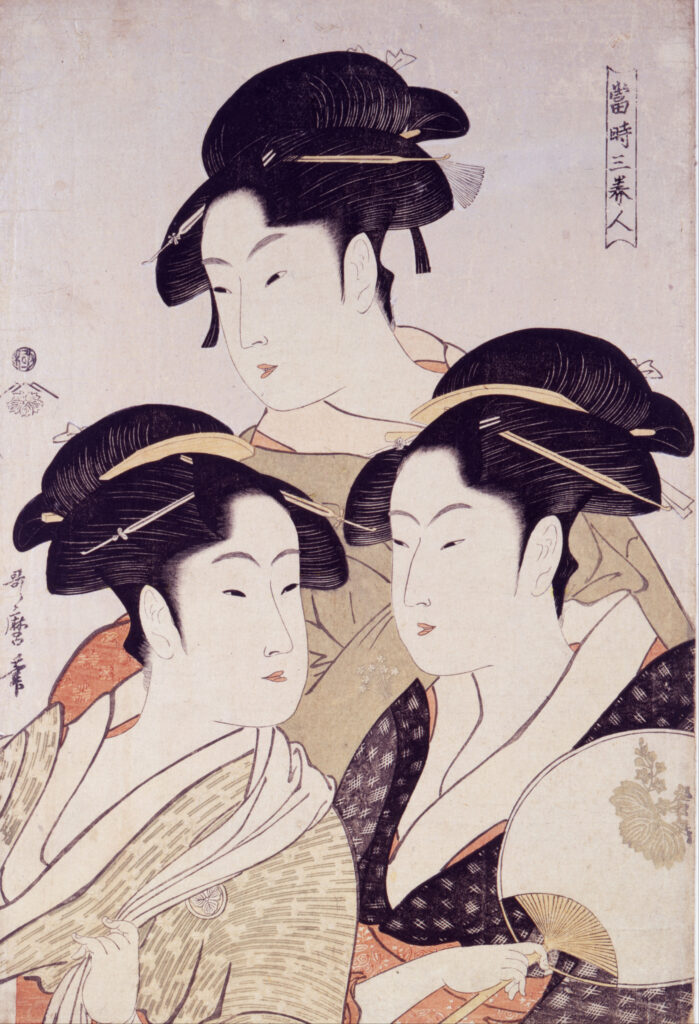
Utamaro used prostitutes and courtesans as motifs for his ukiyo-e, the composition of which conveys a more vivid expression of the beautiful women depicted. By featuring these women, Utamaro’s works made them famous and instantly recognized them as celebrities, even though they were unknown figures living in a corner of the city of Edo at the time. Utamaro not only produced wonderful ukiyo-e but also was a trendsetter of his time.
The Fight Against the Shogunate
Although he had become a popular painter, Kitagawa Utamaro’s popularity suffered a setback due to the Shogunate’s new publication control ordinance. During that time, many artists faced punishment under this ordinance, which prohibited the lending of books that controlled ideas, had a negative impact on public morals, or contained gossip. The use of multicolor ukiyo-e prints and extravagant paints was forbidden, as was the inclusion of the names of geisha and teahouse girls in paintings of beautiful women.
In 1804, Utamaro Kitagawa’s painting “A View of the Pleasures of the Taiko and His Five Wives at Rakutō” faced repercussions under the Kansei Reforms, which were being implemented by the shogunate. This triptych, published in 1804, depicts the famous cherry-blossom viewing party that Hideyoshi held in 1598. While ostensibly an innocent historical scene, its subject, the shogun whose heirs were overthrown by the ancestors of the ruling Yokugawa family, held significant meaning for the townsmen of Edo, who were discontented with the restrictive and corrupt government. For his defiance of the official and ineffectual ban on this theme, Utamaro was jailed and spent fifty days in hand chains. This, combined with the extreme loss of inspiration and support he suffered with the death of his friend and publisher Tatsuya in 1797, seems to have broken his spirit. Shortly after this punishment, Utamaro Kitagawa fell ill and died on October 31, 1806.
The Fight Against the Shogunate
The Museum of Fine Arts, Boston, boasts a remarkable collection of 50,000 ukiyo-e prints, along with numerous printed books and paintings. The reason behind the substantial presence of Japanese works of art in Boston traces back to the participation of the new Japanese government in the World Exposition held in 1867. This exposition aimed to commemorate the 100th anniversary of the founding of the United States and showcase Japanese culture to the world. As part of their exhibition, Japan displayed ukiyo-e prints and ceramics, captivating Americans with the richness of Japanese culture. Prompted by the admiration for Japanese artistry, many Americans flocked to Japan, acquiring ukiyo-e and other art pieces. Subsequently, these collections were posthumously donated to the Museum of Fine Arts, Boston.
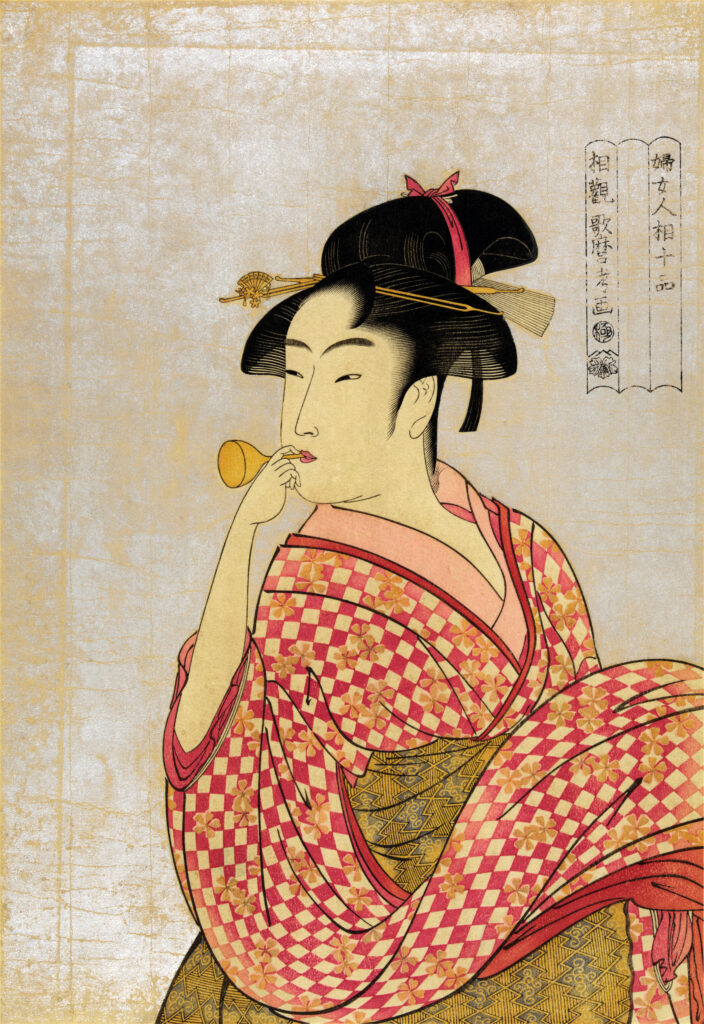
Ukiyo-e, originally printed for public enjoyment, possesses a unique aesthetic, precision, and refinement despite not being inherently noble. This underscores the high cultural standards of the common people in Edo.
Utamaro’s works found a home across the seas at the Museum of Fine Arts, Boston, where they currently hold an impressive collection of 383 pieces attributed to him.
.
.
.

